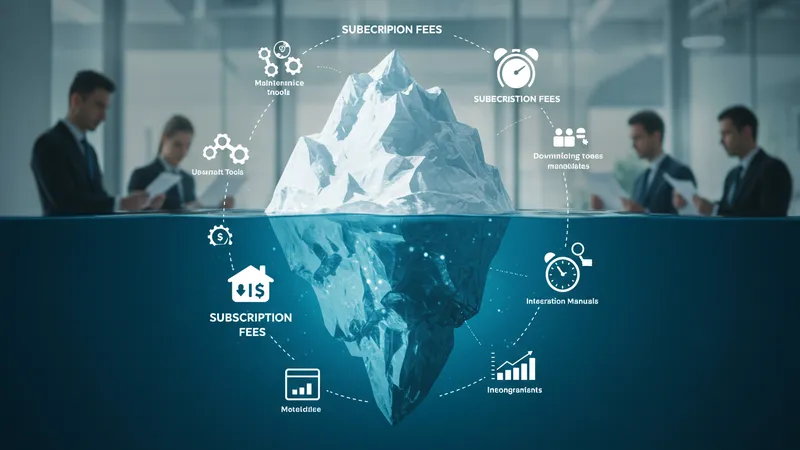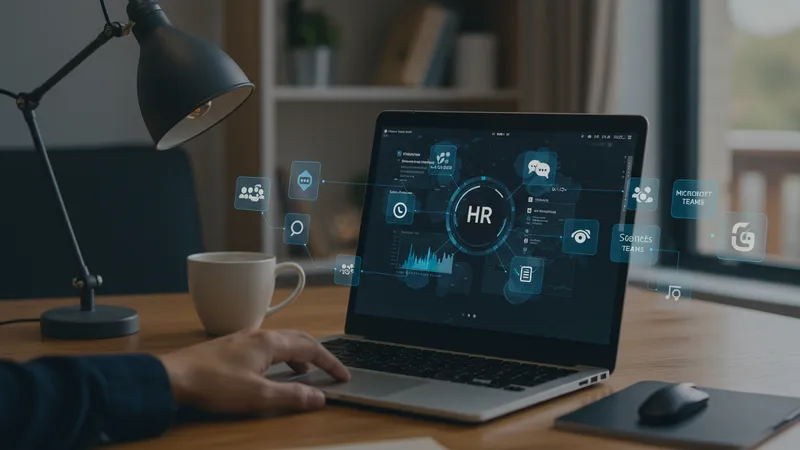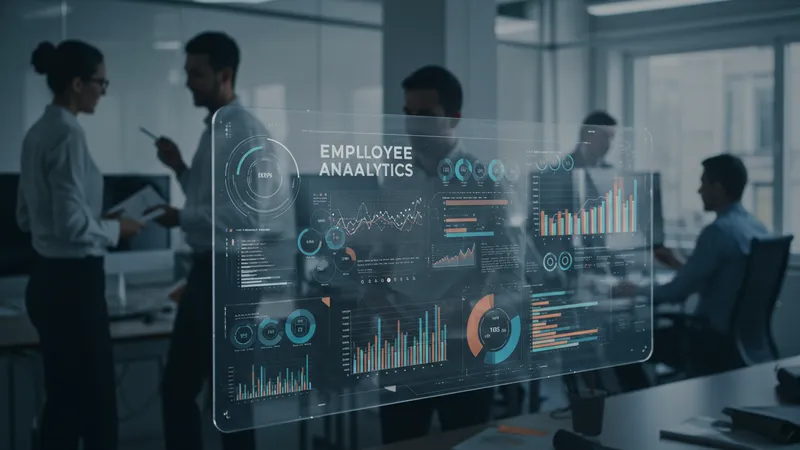Did you know that one in three businesses cites inefficient HR processes as a key barrier to their growth? As companies strive for efficiency, the right HR software becomes an unmissable ingredient.
With hybrid work models on the rise, the need for robust digital HR solutions has peaked. Whether you’re leading a small startup or a global enterprise, staying competitive means adapting faster than ever.

Shockingly, many companies downplay the importance of data-driven insights in their HR processes. Ignoring this can lead to costly inefficiencies and missed opportunities. But that’s not even the wildest part…
Surprisingly, integrating HR software can reshape a company’s culture entirely. These systems don’t just automate paperwork; they empower employees and create transparency across teams. But wait until you hear about the pitfalls of outdated software…
What happens next shocked even the experts—certain HR tools are becoming obsolete faster than expected. Stay with us to uncover which ones are at risk...
Automation is revolutionizing HR processes like never before. Small businesses are finding that automation tools not only save time but also significantly cut costs. This is particularly true for payroll management and employee records. But surprisingly, it’s not just about saving time—automation is reshaping workplace culture.

For instance, automating feedback systems can enhance communication and identify potential issues before they become significant problems. HR software solutions like Zapier are leading the charge by offering tools that integrate seamlessly into existing systems. However, the real game-changer is how automation fosters a more engaged workforce.
But automation has its challenges too. Many businesses underestimate the initial setup and training requirements, which can lead to false starts. The key is strategic implementation, ensuring that employees are on board from the outset. Isn’t it intriguing how a digital solution can bring teams together?
Companies that strike the right balance find that they can dedicate more resources to strategic planning rather than mundane tasks. This trend is forcing HR departments to rethink their approach continuously. But there’s one more twist that could redefine your HR strategies forever...
While some HR software solutions thrive, others falter, largely due to rapidly changing technology. Traditional HR tools that fail to innovate risk obsolescence as newer, more adaptive solutions emerge. Sticking with outdated systems can lead to inefficiencies and vulnerabilities, but what’s driving this change?

Mobile access became crucial overnight, pushing companies to adopt platforms that support remote functionalities. Solutions like Slack offer seamless interaction, enabling teams to stay connected globally. But those companies that ignore this transition risk falling behind. Are your tools ready for the modern worker?
Customization is another pivotal factor. Businesses demand tools that can adapt to their unique needs, which means a one-size-fits-all solution is becoming a thing of the past. This pushes HR departments to assess their needs critically and choose versatile solutions like Gusto, which offers robust customization options. But is your tech stack flexible enough?
In a market flooded with options, differentiation comes from usability and innovation. Forward-thinking companies prioritize intuitive interfaces that require minimal training. As expectations evolve even faster, how should you prepare for the next wave of HR tech advances?
While HR software promises efficiency, it can also introduce unexpected costs. Subscription fees are just the tip of the iceberg; hidden costs often catch businesses off-guard. Maintenance, updates, and unexpected downtime can quickly escalate expenses. It’s a hidden challenge many face when diving into digital transformation.

A surprising statistic reveals that nearly 40% of companies spend more on hidden HR software costs than on the software itself. The key lies in understanding the full scope of implementation costs, including staff training and system integration. Could your company’s budget withstand these unplanned expenses?
Furthermore, the pressure to continuously update and adapt systems to changing regulations adds another layer of financial strain. Frequent updates ensure compliance but can quickly drain resources. But does the cost of falling out of compliance outweigh maintaining current systems?
Companies that proactively anticipate these expenses can align their budgets more effectively. The secret is in the details and staying informed about software updates and industry trends. But what you read next might change how you see this forever...
Deciding on the perfect HR software requires more than just comparing features; it’s about understanding your business's unique needs. Customization and integration capabilities should be at the forefront of your decision-making process. Yet, surprisingly, many overlook these aspects until it's too late.

One insider tip is to involve end-users in the selection process. Employees who will use the software daily can provide valuable insights into usability and efficiency. Solutions like Zenefits stand out by offering solutions tailored to specific industry needs. Isn’t it time to consider your team’s perspective?
Another critical factor is customer support. Having reliable support can make or break the implementation process. Companies like Ultimate Software highlight their customer service as a key differentiator, ensuring smooth adoption. Could exceptional support be the unsung hero of successful HR software?
Finally, exploring trial periods can prevent costly mistakes. Before committing, take advantage of demos and trial versions to fully grasp each platform's potential. This approach minimizes risk and ensures a good fit. But what hidden features might sway your final decision?
In the age of remote work, employee engagement becomes more crucial yet challenging. HR software now plays a vital role in cultivating workplace culture, but could it be doing more harm than good if mismanaged? The story doesn’t end where you might think.

Increased integration of HR tools in everyday operations can either create a sense of community or lead to digital fatigue. A surprising number of employees report feeling overwhelmed by messages and notifications, causing disengagement. Are we sacrificing quality for quantity?
However, software like Asana demonstrates how technology can enhance visibility and participation across teams. It encourages collaboration in ways physical offices could not, leading to a more engaged workforce. But did you know the key driver of engagement might be something entirely different?
Focusing on fostering interaction rather than technology overload can revive employee spirits. It’s about creating meaning in digital interactions. This newly discovered balance might unlock unprecedented levels of productivity if managed correctly. What’s next in redefining engagement in your workplace?
AI is transforming how businesses handle HR like never before. It goes beyond automating tasks, delving into predictive analytics and advanced decision-making. As companies grapple with a fast-paced work environment, could AI be the secret to staying ahead?

AI's predictive abilities enable businesses to anticipate turnover rates, talent needs, and even plan future workforce requirements. Tools like Microsoft Dynamics 365 leverage AI to provide real-time insights and recommendations, giving companies a competitive edge. But the possibilities stretch far beyond mere predictions.
The ethical implications of AI wield power in debates around privacy and bias. How we navigate these challenges defines our workforce's future. Understanding AI’s nuances is crucial as it broadens beyond technical limitations. Are you ready to challenge your assumptions?
AI integration in HR isn’t without its hurdles. The road to harnessing its full potential involves meticulous planning and alignment with business goals. Embracing AI means redefining our approach to human resources entirely. Could AI be the key to unlocking unparalleled HR solutions?
While large enterprises have long used sophisticated HR systems, small businesses are now reaping the benefits too. They face unique challenges that traditional methods can barely address. But strategic HR systems might offer the solution they need.

Cost-effective solutions have emerged, tailored for smaller operations. Systems like Freshteam provide affordable, scalable options without compromising essential features. The key lies in leveling the playing field for smaller businesses, offering tools once exclusive to larger companies.
Moreover, small businesses can enhance their recruitment efforts through specialized HR platforms. These systems streamline applicant tracking and optimize hiring pipelines, ensuring top talent doesn’t slip through the cracks. Can your small business afford to miss these benefits?
The agility of small businesses is their strength. Adopting HR systems can propel them into new growth phases, leveraging capabilities that support expansion plans. But is your business prepared to seize this opportunity fully?
As we move into the future, the HR landscape promises innovation like never before. From virtual reality onboarding to blockchain-driven record-keeping, these advancements redefine what’s possible in human resources management.

Perhaps most surprising is the potential rise of VR in training initiatives. VR enables immersive learning experiences previously unimaginable. Pioneers in the field recognize the power of VR to enhance employee understanding and retention. Will your company be at the forefront of this trend?
Meanwhile, blockchain technology heralds a transformation in how employee data gets stored and secured. This shift towards secure, transparent data management is catching the attention of forward-thinking businesses. Could blockchain be the key to safeguarding sensitive HR information?
Future trends also suggest an integration of augmented reality (AR) in the hiring processes. This new approach could redefine how companies interact with potential candidates. Are you ready to meet the challenges of tomorrow?
Customization promises flexibility, but it comes with potential pitfalls. As businesses demand tailored solutions, the risk of complexity looms large. Could the quest for customization backfire?

Complexities arise when intricately customized systems lead to inefficiencies and increased maintenance needs. Balancing comprehensive customization with usability is a delicate act. How far should your company push the boundaries?
Sometimes, relying heavily on customization can result in fragmented systems, inhibiting seamless integration with other platforms. But striking a balance ensures that customized solutions serve purposes without adding unnecessary layers. Is your system truly optimized?
Customization offers a competitive edge, bridging gaps between generic software and specific organizational needs. But beware—too much customization might impede rather than enhance productivity. It’s time to reevaluate your level of customization, asking, "Is this where we need to go?"
As HR systems evolve, so too do the threats to data privacy. With personal data becoming increasingly precious, safeguarding this information is more critical than ever. But are current measures sufficient?

Shockingly, many companies underestimate the importance of rigorous data protection protocols. Industry leaders advocate for transparency and strict compliance with data privacy laws. The stakes are high; could your company withstand a data breach?
Fortunately, new technologies increase security, promising hope in the battle against data threats. Encryption, secure access, and regular audits are just some ways businesses can defend their data. But how ready is your company to go on the defensive?
Failure to address these concerns jeopardizes customer trust and long-term business viability. It’s an evolving challenge demanding a proactive stance. Are your data protection strategies ready to meet the current demands and future challenges?
The increase in remote work has placed unprecedented demands on HR systems. These tools must now do more than ever—support dispersed teams, facilitate seamless communication, and track productivity accurately. How can HR software address these evolving challenges?

Innovative platforms like Zoom and Microsoft Teams provide the backbone for remote collaboration. Yet, the evolution of HR systems ensures they adapt alongside these technologies. But can your software keep pace with remote workforce needs?
Tracking productivity from afar comes with its challenges, yet modern systems offer solutions balancing oversight with autonomy. As expectations shift, HR software must evolve to foster trust and transparency among remote workers. Ready to navigate the complexities of remote management?
Remote work’s ascent offers an opportunity to reassess and optimize HR strategies. It transforms our understanding of productivity, revealing new angles from which to approach team engagement. Were you ever prepared for this new era?
HR analytics offer a wealth of untapped potential. By leveraging data analysis, companies can unlock insights into employee performance, satisfaction, and retention. Could these insights transform your business strategy?

With AI tools and machine learning, HR analytics provide actionable insights that help shape management decisions. Users of platforms like Oracle HCM witness improved decision-making and increased strategic planning capabilities. But could there be something even greater to uncover?
Beyond performance, analytics can predict future hiring needs, helping businesses prepare proactively rather than reactively. This forecast creates a strategic advantage, allowing for assertive talent acquisition planning. Might HR analytics hold the answers you’ve been seeking?
The benefits of these insights drive companies toward sustainable growth. Understanding data and its potential paves the way for progress and innovation. What surprising revelations could your business unlock through HR analytics?
As business winds shift, company culture experiences significant evolution, demanding HR’s focus. These cultural changes influence employee well-being and productivity, revealing their critical intersection with HR strategies. But how real are these impacts?

Conversations on diversity, equity, and inclusion reshape workplace norms and expectations, driving HR departments to rethink their approach. Companies are more accountable than ever, facing new scrutiny and demands for change. Is your HR department in sync with these cultural shifts?
Adapting to these shifts requires more than policies; it requires a genuine reevaluation of values and company goals. It’s a challenge and an opportunity to create more inclusive environments. But what does this mean for your organization?
The future of culture in business lies in openly embracing change. It’s time for HR to become agents of change, breaking free from outdated paradigms and paving the way for the future. Are you ready to lead this pivotal transformation?
While data-driven decisions offer precision, they come with potential pitfalls. Over-reliance on data can obscure the human element, leading to misaligned strategies. How should businesses strike a balance?

Interpreting data correctly is crucial, as misinterpretations can misguide companies, leading to misguided strategies. Real-life context is vital in decoding data, ensuring decisions align with company values and goals. Could your analytics approach require fine-tuning?
Data-driven insights risk becoming detached from the everyday realities employees face. Striking a balance between data and human nuances creates strategies that resonate with both management and staff. How do businesses achieve this harmony?
When leveraged appropriately, data becomes a cornerstone in HR strategy, fostering informed and precise decision-making. It’s all about creating synergies between numbers and narratives—suited to propel your organization forward. Ready to revisit your data strategy?
As the landscape of HR software continues to evolve, companies find themselves at a pivotal crossroads. The choices made today set the stage for tomorrow’s successes or challenges. Navigating these complexities demands foresight and adaptability, spaces where innovation and technology meet strategy.
From embracing AI to managing remote teams, these solutions revolutionize our understanding of human resources. Remember to consider hidden pitfalls, data privacy, and unforeseen costs as you navigate this landscape. The decisions you make could transform HR from a cost center into a powerhouse for growth.
Share this article, bookmark it for future reference, and let’s continue the dialogue on transforming HR's future. Your next move might redefine how businesses manage their most valuable asset—their people.